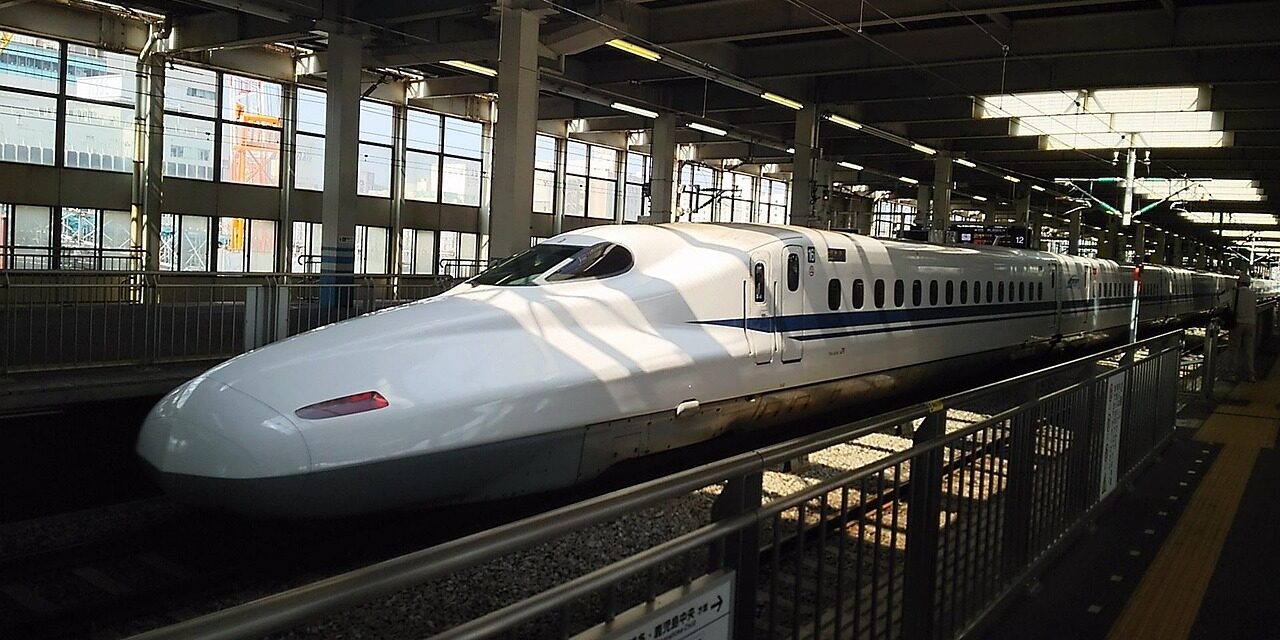The Shinkansen, or “bullet train,” represents a hallmark of modern transportation, reflecting Japan’s commitment to engineering excellence and efficiency. First introduced in 1964, just in time for the Tokyo Olympics, the Shinkansen has evolved into one of the world’s most advanced rail systems. This essay will explore the historical development, demographic impact, operational statistics, and specific examples of the Shinkansen, illustrating its significance in Japanese society.
Historical Background
The concept of high-speed rail in Japan can be traced back to the post-World War II era, a period marked by rapid economic growth and urbanization. Recognizing the necessity for an advanced transportation method to foster connectivity between major urban centers, the Japanese government launched the Shinkansen project in the early 1950s. The inaugural line, known as the Tōkaidō Shinkansen, connected Tokyo and Osaka, spanning approximately 515 kilometers. It officially opened on October 1, 1964, featuring services that could reach speeds of up to 210 km/h (130 mph). The train’s impressive performance and punctuality captured the public’s imagination and quickly established the Shinkansen as a symbol of Japan’s post-war recovery and modernization.
Demographic Impact
The Shinkansen has significantly influenced the demographic landscape of Japan. By facilitating faster travel between major metropolitan areas, the train has contributed to the growth of suburbanization. The ability to commute efficiently between cities has enabled individuals to seek housing in less congested areas while maintaining access to urban employment centers. According to the Japan Transport Safety Board, ridership on the Shinkansen system has steadily increased over the decades, reaching approximately 440 million passengers annually as of 2019. This mode of transport accounts for a considerable percentage of travel between key cities, thereby influencing economic activities and residential trends.
Moreover, the Shinkansen is a critical player in Japan’s tourism industry. The train allows international visitors easy access to cultural sites across the country. For instance, tourists can travel from Tokyo to Kyoto – famous for its historic temples and gardens – in just over two hours, fostering a seamless transition between Japan’s modern and traditional landscapes. Consequently, an expanding service network has led to a global increase in tourism, with foreign visitors exploring the archipelago in increasing numbers.
Operational Statistics
The extraordinary efficiency of the Shinkansen is underscored by its operational statistics. The trains are renowned for their punctuality; on average, Shinkansen services have a delay of just 36 seconds annually, which is remarkable for such a vast network. With an average speed of around 270 km/h (168 mph), the Shinkansen has dramatically reduced travel times. For example, the journey between Osaka and Tokyo, which would typically take over eight hours by car or conventional train, now takes as little as two and a half hours on the Shinkansen.
The Shinkansen consists of several services, including the Nozomi, Hikari, and Kodama, each catering to different commuter and leisure travel needs. The Nozomi service is the fastest, making just a few stops between major cities, while other services, such as the Kodama, stop at all stations along the route. This diversity of service allows the Shinkansen to cater to a broad demographic spectrum, from business professionals to casual travelers.
Examples and Innovations
In terms of technological advancements, the Shinkansen has continuously embraced innovation. The N700 series, introduced in 2007, is one of the most modern iterations, enabling speeds of up to 300 km/h (186 mph). This model features enhanced aerodynamic designs and a sophisticated tilting system, allowing it to navigate curves with ease, thereby enhancing passenger comfort.
Moreover, efforts are underway to integrate the Shinkansen with other rail services, focusing on a seamless travel experience. Future plans include the development of a maglev (magnetic levitation) line that promises to exceed existing speed records, with projections of speeds reaching 600 km/h (373 mph). This innovation underscores continuous advancements in rail technology and Japan’s dedication to remaining at the forefront of global transportation networks.
Conclusion
The Shinkansen is more than just a mode of transport; it is a vital component of Japan’s economic and social fabric. Through its historical development, demographic impacts, and operational excellence, the Shinkansen demonstrates how effective transportation systems can transform a nation. As Japan continues to innovate and expand its rail network, the Shinkansen remains a symbol of progress, efficiency, and resilience in the face of the challenges of modern urban living. Its significance will undoubtedly evolve, continuing to shape how people traverse the nation for generations to come.

